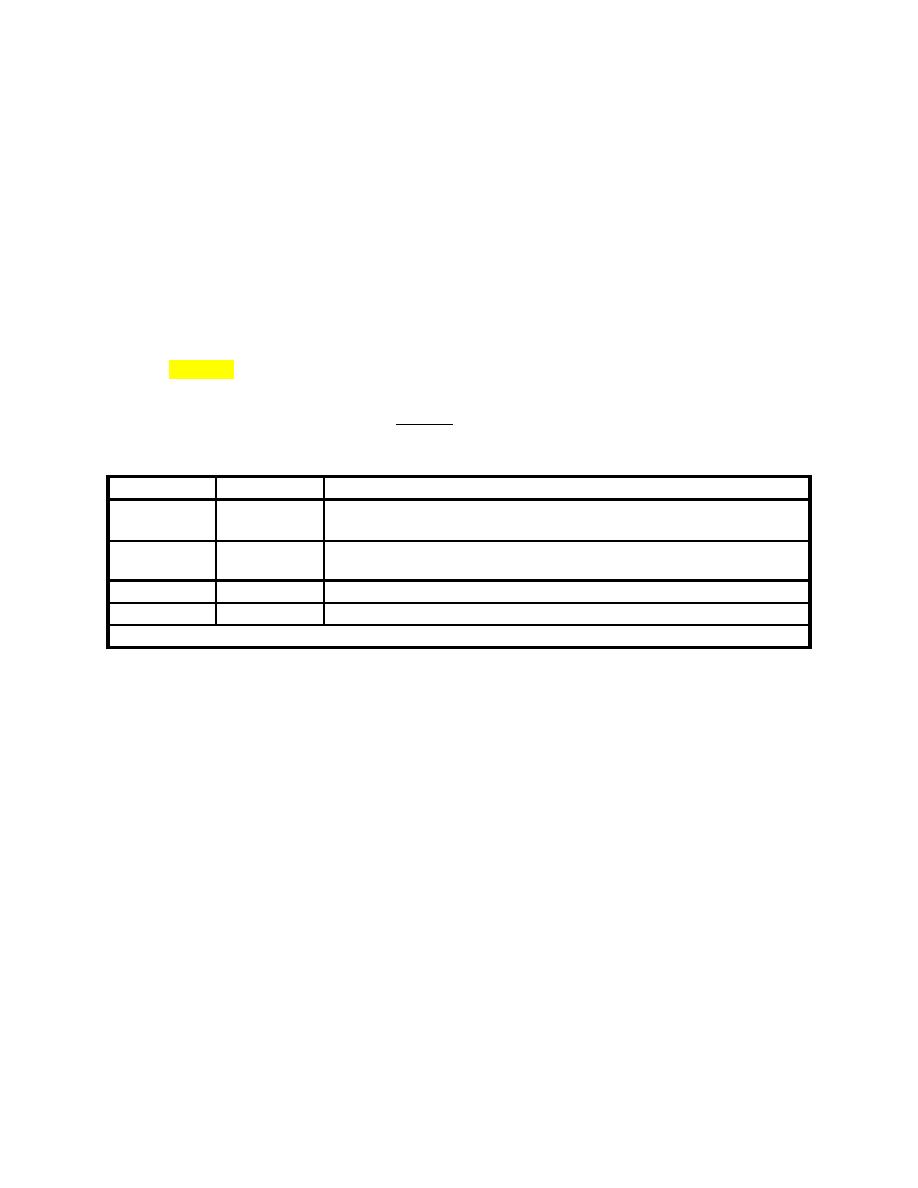
CEMP-E
TI 850-02
AFMAN 32-1125(I)
1 MARCH 2000
2. GRADES AND TRACK PROFILE.
a. Grades. Chapter 3 gives gradient criteria for main running tracks. Chapter 8 gives gradient criteria
for terminal areas.
b. Vertical Curves. Vertical curves are required as a transition between different grades. Transition
rates are different for summits and sags. Here, summit refers to a convex curve where an ascending
grade changes to a flatter grade, where a descending grade changes to a steeper grade, or where an
ascending grade changes to a descending grade. Sags are concave curves that occur where an
ascending grade changes to steeper grade, where a descending grade changes to flatter grade, or where
a descending grade changes to an ascending grade. (Note: It is best to avoid locating turnouts in vertical
curves). Table 6-1 shows recommended transition rates between grades. The length of track required
for these transitions is determined from equation 6-1.
G1 - G2
L=
x 100
Eq 6-1
r
Table 6-1. Recommended Transition Rates Between Grades on Main Running Tracks
Summits
Sags
Operating Application
0.1
0.05
Average rate where speeds will exceed 15 MPH and right-of-way length is
ample.
0.2
0.1
Average rate where speeds will not exceed 15 MPH or where transition length
is limited.
0.3
0.15
Maximum rate where speeds will exceed 15 MPH.
0.4
0.2
Maximum rate where speeds will not exceed 15 MPH.
Notes: (1)
Figures in table are given as percent change in grade per 100 feet of track length.
c. Track Profile. On either main running tracks or terminal tracks, a rolling profile (frequent changes in
gradient) in the roadbed or in the final track surface (top of rail elevation) is undesirable. The criteria in
table 3-2 should be followed to maintain an acceptably smooth track profile.
d. For auxiliary tracks, gradient criteria given in chapter 8, paragraph 3 may be used.
L
=
Length of track required for vertical curve (ft).
G1 and G2
=
Slope of the two adjacent grades (percent), where ascending grades have a positive
value and descending grades have a negative value.
r
=
Rate of change in grade in 100 ft. (For main running tracks, use table 6-1. For
terminal tracks, also see chapter 8, paragraph 3).
3. HORIZONTAL CURVES.
a. Definition. Railroads are laid out with circular curves using the chord definition. Curvature is
measured in degrees, as indicated in equation 6-2.
6-5



 Previous Page
Previous Page
